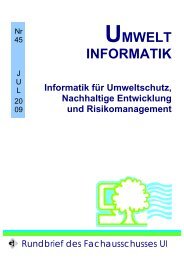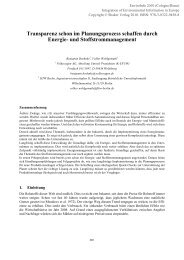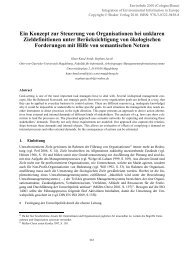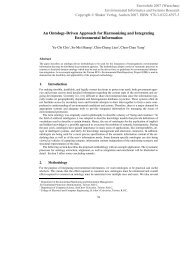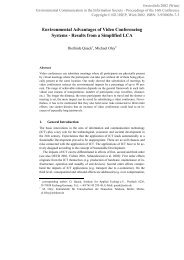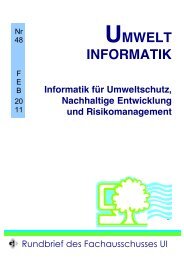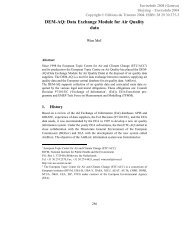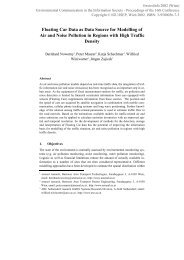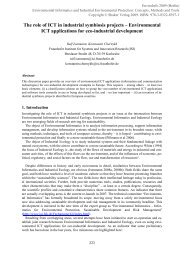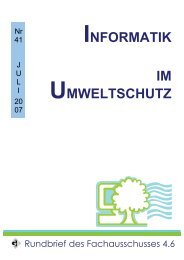the Case of Life Cycle Inventories - EnviroInfo
the Case of Life Cycle Inventories - EnviroInfo
the Case of Life Cycle Inventories - EnviroInfo
Create successful ePaper yourself
Turn your PDF publications into a flip-book with our unique Google optimized e-Paper software.
Figure 4Approach <strong>of</strong> an ontology for semantic enhancement <strong>of</strong> ecoinvent dataThe ontology makes it possible to take a product and to identify all corresponding ecoinvent activities forproviding, processing and disposing it. In addition, suitable transport activities can be inferred from <strong>the</strong>physical properties <strong>of</strong> <strong>the</strong> product. In some cases multiple activities may exist per category that can be distinguishedby <strong>the</strong>ir properties.Under <strong>the</strong> assumption that <strong>the</strong> entity <strong>of</strong> <strong>the</strong> product and <strong>the</strong> type <strong>of</strong> activity can be identified in <strong>the</strong> ERP,mapping activities between ERP and ecoinvent becomes much easier. However, <strong>the</strong> following challengeshave not yet been solved satisfactorily by <strong>the</strong> ontology:1. The atomicity <strong>of</strong> products is still work in progress. We assume a certain abstraction level with ourproduct concept. This means that similar products with different properties are collected under oneproduct. “Aluminum” thus means a raw material independently <strong>of</strong> whe<strong>the</strong>r it was manufactured asprimary raw material or secondary raw material.2. For <strong>the</strong> unequivocal identification <strong>of</strong> activities <strong>the</strong>ir properties are to be defined exactly. These dependon both <strong>the</strong> activity category and <strong>the</strong> type <strong>of</strong> product. For example, in <strong>the</strong> case <strong>of</strong> raw materials, a distinctionis made between primary or secondary raw materials, whereas agrarian products are classifiedaccording to cultivation methods. The difficulty exists here in <strong>the</strong> exact classification <strong>of</strong> products. Asecoinvent describes <strong>the</strong> “whole world” <strong>of</strong> tradable products, classification systems <strong>of</strong> specific disciplinessoon reach <strong>the</strong>ir limits. Therefore designing a master system <strong>of</strong> classification is quite difficult.3. The ontology describes only activities that are defined in ecoinvent. The ontology <strong>the</strong>refore naturallyhits its limits whenever activities are lacking for specific products or product properties. For example,Copyright 2011 Shaker Verlag Aachen, ISBN: 978-3-8440-0451-9






